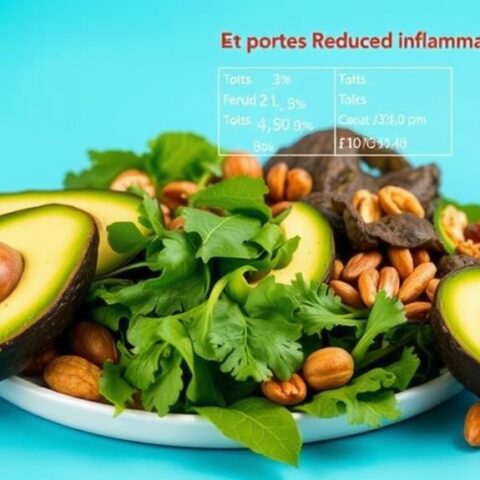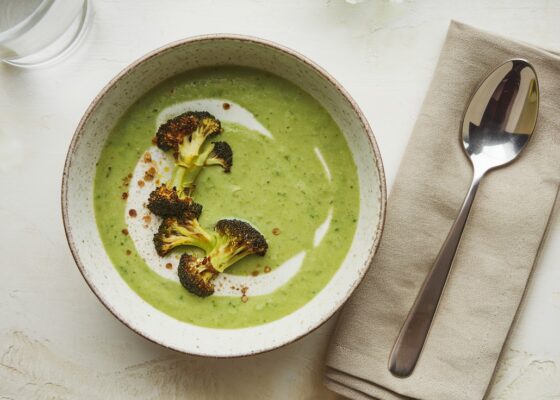
Sugar-free pudding is not necessarily low-carb, despite its name. Commercial sugar-free puddings often contain significant carbohydrates from thickeners, modified food starches, and other ingredients that can impact blood sugar levels. While these products eliminate added sugars through artificial sweeteners, they may contribute 5-10 grams of carbs per serving. Making homemade keto-friendly pudding with ingredients like heavy cream, natural thickeners, and sugar alternatives offers better control over carbohydrate content. Understanding these distinctions helps create truly low-carb dessert options.
Key Takeaways
- Sugar-free pudding often contains significant carbohydrates from thickeners and modified starches, despite having no added sugar.
- Commercial sugar-free puddings can contain 5-10 grams of carbs per serving due to ingredients like modified food starch.
- Making homemade low-carb pudding with heavy cream, egg yolks, and sugar alternatives provides better control over carbohydrate content.
- Sugar alcohols and artificial sweeteners in sugar-free puddings may still impact blood sugar levels and ketosis.
- True low-carb pudding requires specific ingredients like almond milk, natural thickeners, and keto-friendly sweeteners like erythritol.
Understanding Sugar-Free Vs Low Carb Puddings
When it comes to understanding sugar-free and low-carb puddings, consumers often mistake these two distinct dietary categories as interchangeable.
While sugar-free pudding eliminates added sugars through artificial sweeteners, it may still contain significant carbohydrates from ingredients like cornstarch and other thickeners. For those following a Keto Diet, this distinction is vital, as many commercial sugar-free puddings can impact daily carb limits.
Creating homemade sugar-free pudding offers better control over carbohydrate content. By using alternatives like almond milk and natural thickeners, rather than traditional starches, these recipes can achieve genuine low carb status.
Making pudding at home with low-carb ingredients like almond milk lets you control carbs while still enjoying this classic dessert.
However, store-bought options often contain hidden sugars and carbohydrates, making it essential to carefully examine nutritional labels before incorporating them into a low-carb eating plan. Keto-friendly sweeteners such as stevia or erythritol can help maintain low carb levels while adding the desired sweetness to your homemade puddings.
Hidden Carbohydrates in Commercial Sugar-Free Desserts
While sugar-free desserts may seem like a safe choice for those monitoring their carbohydrate intake, commercial products often harbor unexpected sources of carbs that can derail dietary goals.
Many sugar-free puddings contain sugar alcohols and thickening agents that contribute to their total net carbs, despite being marketed as carbohydrate-conscious options.
Consumers should pay particular attention to serving sizes when calculating carbohydrates, as portions can greatly impact overall intake.
Additionally, artificial sweeteners used in these products may affect blood sugar levels differently among individuals.
While labeled sugar-free, commercial puddings frequently include modified food starch and other fillers that can add 5-10 grams of carbohydrates per serving, making them less suitable for strict low-carb diets than their marketing might suggest.
It's important to be cautious of hidden added sugars that may appear in these products, as they can interfere with ketosis and overall dietary goals.
Making Your Own Keto-Friendly Pudding at Home
Creating keto-friendly pudding at home offers complete control over ingredients and carbohydrate content, making it an ideal alternative to commercial sugar-free options.
To prepare a satisfying keto chocolate pudding, combine heavy cream or full-fat coconut milk with a low-carb sweetener and cocoa powder. Egg yolks serve as natural thickeners while adding protein and richness to the dessert.
The preparation requires constant attention, as the mixture must be whisked continuously over medium-low heat until it reaches the proper consistency.
Once thickened, the pudding should be chilled for several hours to achieve the perfect texture.
For an enhanced finishing touch, top the chilled pudding with unsweetened whipped cream or a handful of fresh berries, maintaining its keto-friendly status while enhancing the dessert experience.
Almond flour, commonly used in keto desserts, can be added for a slight nutty flavor and extra nutritional benefits.
Best Sweeteners and Thickeners for Low Carb Puddings
Selecting appropriate sweeteners and thickeners stands as an important factor in creating successful low-carb puddings that maintain authentic taste and texture. Popular sweeteners like erythritol effectively provide sweetness without greatly impacting blood sugar levels, while combinations with stevia or allulose can help minimize potential aftertastes.
For achieving the desired creamy texture, thickeners such as xanthan gum prove invaluable in low carb pudding recipes. These ingredients create the characteristic smoothness without adding unnecessary carbohydrates.
Additionally, combining heavy cream with unsweetened almond milk enhances richness while maintaining a lower carb profile. When incorporating sweeteners, careful attention to conversion ratios is vital, as their sweetness levels often differ from traditional sugar, requiring precise adjustments to achieve ideal taste. A new sentence with psyllium husk powder and the rest of the sentence.
Smart Portion Control and Storage Solutions
Smart portion control enhances sugar-free pudding from a simple dessert alternative to an effective tool for managing carbohydrate intake. By preparing individual servings in advance, individuals can better regulate their dessert portions while satisfying cravings.
Practical storage solutions include freezing sugar-free pudding in ice cube trays or storing pre-portioned servings in small containers. These methods not only facilitate mindful eating but also provide convenient access to controlled portions.
Adding low-carb toppings like berries or whipped cream can create variety without notably impacting carbohydrate consumption. Strategic placement of pudding servings in less accessible locations can discourage impulsive snacking and promote more conscious eating decisions, making it easier to maintain dietary goals while still enjoying dessert options.
Snacks like Parmesan cheese crisps offer a delicious, low-carb option for those on a keto diet, ensuring snack variety and preventing boredom.
Frequently Asked Questions
Is Sugar Free Pudding Ok on a Low Carb Diet?
Sugar-free pudding can fit into low carb meal planning when monitoring portion control. While containing sugar alternatives, these healthy substitutes help satisfy dessert cravings within dietary restrictions, though carb counts vary between pudding recipes.
Do Sugar Free Desserts Have Carbs?
Sugar-free desserts often contain carbohydrates through ingredients like starches and certain sugar substitutes. While lower in calorie count, ingredient analysis reveals varying carbohydrate content, affecting their suitability for low-carb dietary restrictions.
How Many Carbs Are in Sugar-Free Pudding?
Sugar-free pudding typically contains 2-5 grams of carbohydrates per serving, with variations based on ingredient analysis and sugar alternatives used. Portion control affects overall nutritional value in these dessert choices.
Is Sugar Free Pudding a Good Snack for Weight Loss?
Sugar-free pudding can support weight loss when consumed mindfully. As a guilt-free treat, it helps manage cravings while offering lower calories than traditional desserts, making it suitable among healthy snack options with proper portion control.
Conclusion
While sugar-free pudding may seem like a logical low-carb choice, consumers should carefully examine ingredients and total carbohydrate content before indulging. Commercial sugar-free puddings often contain hidden carbs from thickeners and fillers. For truly low-carb desserts, making homemade pudding using keto-friendly ingredients like heavy cream, natural sweeteners, and appropriate thickeners offers better control over carbohydrate content while satisfying sweet cravings responsibly.









No Comments